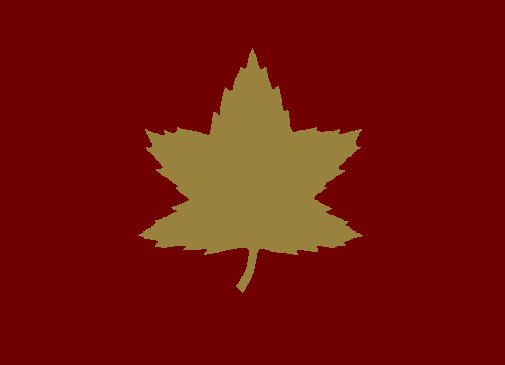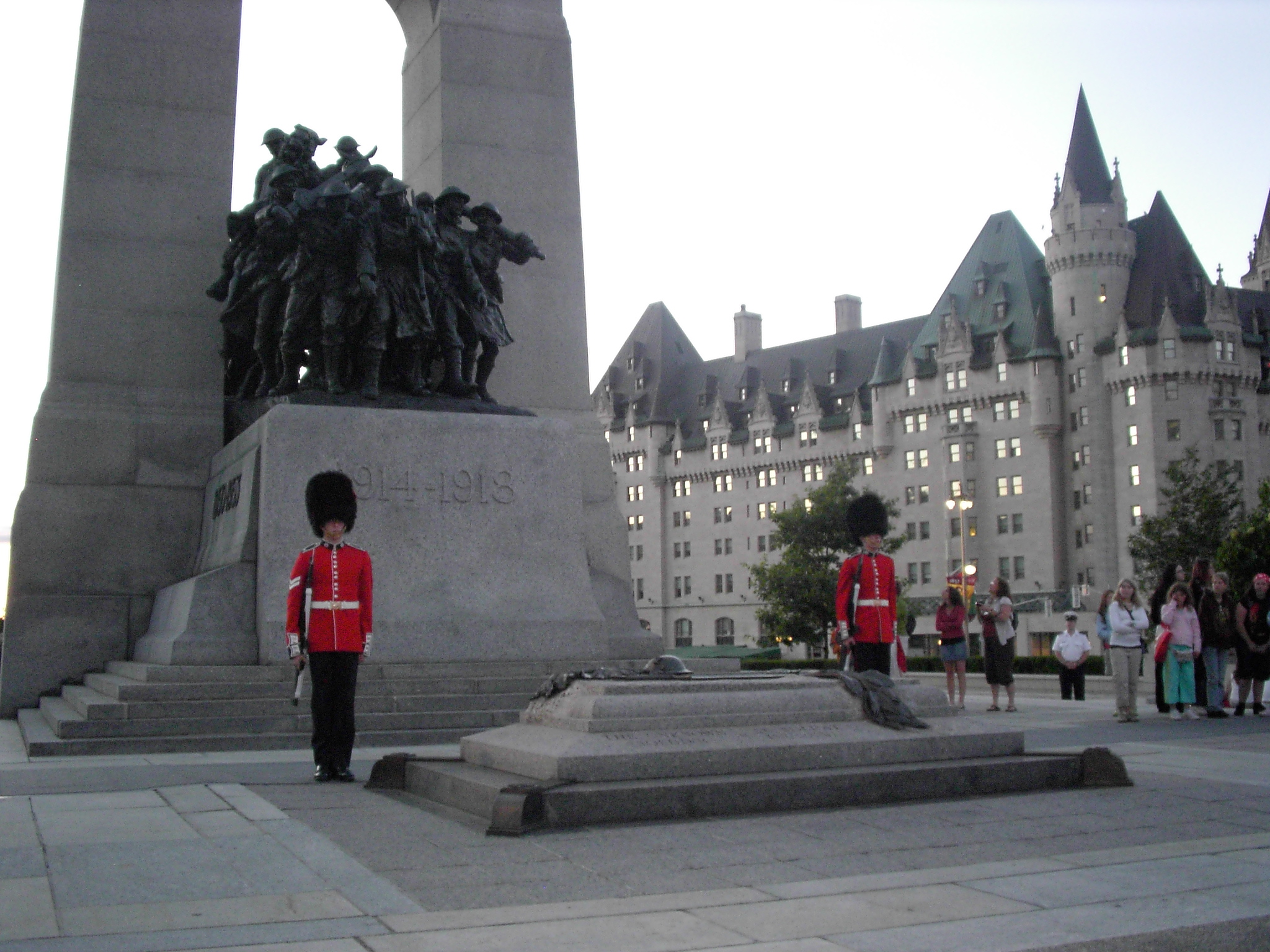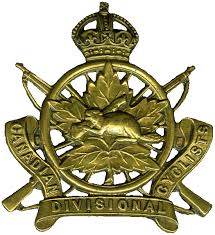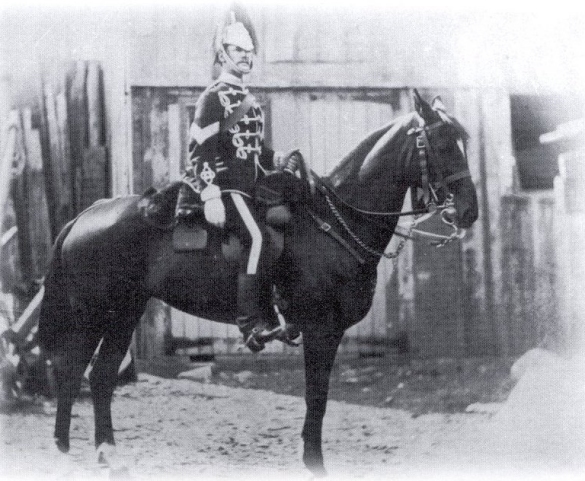|
3 Intelligence Company
3 Intelligence Company (abbreviated 3 Int Coy) is a line unit reporting directly to the 5th Canadian Division which is headquartered in Halifax, Nova Scotia. The Intelligence Operators & Intelligence Officers of the unit train regularly to augment their Regular Force counterparts on domestic and foreign operations. Tracing its lineage to the original 3 Intelligence Company (1950) that was dissolved at Unification of the Canadian Forces, Unification, the current unit was stood up on November 4, 1995 at a parade near the old library building in Royal Artillery Park, downtown Halifax. Lineage The Canadian Army announced the formation of 3 Intelligence Company on February 27, 1950 and the unit was formally stood up on November 15, 1950. The first commanding officer was Major Edward Fairweather Harrington who had formerly served in the Halifax Rifles (23rd Armoured Regiment). Maj Harrington served in the First World War with the Royal Flying Corps, and in the Second World War with th ... [...More Info...] [...Related Items...] OR: [Wikipedia] [Google] [Baidu] |
Intelligence Branch (Canadian Forces)
The Intelligence Branch () is a personnel branch of the Canadian Forces (CF) that is concerned with providing relevant and correct information to enable commanders to make decisions. The branch works in a variety of challenging positions, at home and abroad, meeting the needs of commanders and operational planners of the Canadian Forces at all levels and in all environments. Since the branch's inception, members have deployed overseas to Bosnia and Herzegovina, Haiti, Somalia, Rwanda, Timor-Leste, Latvia, Ukraine, Mali, Kuwait, Afghanistan, and Iraq. Branch members have also deployed domestically on a number of operations. These include tasks related to the January 1998 North American ice storm, ice storms in Quebec, 1997 Red River flood, floods in Winnipeg, fires in British Columbia and the Canadian military's response to the COVID-19 pandemic. History The first intelligence guides unit in Canada was the "4th Troop of Volunteer Cavalry of Montreal (or Guides)", formed on 7 Fe ... [...More Info...] [...Related Items...] OR: [Wikipedia] [Google] [Baidu] |
Army
An army, ground force or land force is an armed force that fights primarily on land. In the broadest sense, it is the land-based military branch, service branch or armed service of a nation or country. It may also include aviation assets by possessing an army aviation component. Within a national military force, the word army may also mean a field army. Definition In some countries, such as France and China, the term "army", especially in its plural form "armies", has the broader meaning of armed forces as a whole, while retaining the colloquial sense of land forces. To differentiate the colloquial army from the formal concept of military force, the term is qualified, for example in France the land force is called , meaning Land Army, and the air and space force is called , meaning Air and Space Army. The naval force, although not using the term "army", is also included in the broad sense of the term "armies" — thus the French Navy is an integral component of the collect ... [...More Info...] [...Related Items...] OR: [Wikipedia] [Google] [Baidu] |
5th Canadian Division
The 5th Canadian Division is a formation of the Canadian Army responsible for the command and mobilization of most army units in the provinces of New Brunswick, Nova Scotia, Prince Edward Island and Newfoundland and Labrador; as well as some units in Kingston, Ontario. The division is recognized by the distinctive maroon patch worn on the sleeve of its soldiers. It was first created as a formation of the Canadian Expeditionary Force during the First World War. It was stood down during the war only to be reactivated through the renaming from '1st Canadian Armoured Division' to the 5th Canadian (Armoured) Division during the Second World War. It was stood down following demobilization and was again reactivated in 2013 with the renaming of the former Land Force Area Atlantic. First World War The 5th Canadian Division of the Canadian Corps was formed during World War I under Major-General Garnet Burk Hughes. The 5th began assembling in United Kingdom, Britain in February, 1917, but ... [...More Info...] [...Related Items...] OR: [Wikipedia] [Google] [Baidu] |
3 Int Coy Standup
3 (three) is a number, numeral and digit. It is the natural number following 2 and preceding 4, and is the smallest odd prime number and the only prime preceding a square number. It has religious and cultural significance in many societies. Evolution of the Arabic digit The use of three lines to denote the number 3 occurred in many writing systems, including some (like Roman and Chinese numerals) that are still in use. That was also the original representation of 3 in the Brahmic (Indian) numerical notation, its earliest forms aligned vertically. However, during the Gupta Empire the sign was modified by the addition of a curve on each line. The Nāgarī script rotated the lines clockwise, so they appeared horizontally, and ended each line with a short downward stroke on the right. In cursive script, the three strokes were eventually connected to form a glyph resembling a with an additional stroke at the bottom: ३. The Indian digits spread to the Caliphate in the 9th c ... [...More Info...] [...Related Items...] OR: [Wikipedia] [Google] [Baidu] |
Unification Of The Canadian Forces
The unification of the Canadian Armed Forces took place on 1 February 1968, when the Royal Canadian Navy, Canadian Army, and Royal Canadian Air Force were merged to form the Canadian Armed Forces. History A white paper was tabled in the Parliament of Canada on 26 March 1964 by the Minister of National Defence, Paul Hellyer, and the Associate Minister of National Defence, Lucien Cardin. This document outlined a major restructuring of the three separate armed services, describing a reorganization that would include the integration of operations, logistics support, personnel, and administration of the separate branches under a functional command system. The proposal met with strong opposition from personnel in all three services, and resulted in the dismissal of the navy's senior operational commander, Rear Admiral William Landymore, as well as the forced retirements of other senior officers in the nation's military forces. The protests of service personnel and their superiors ... [...More Info...] [...Related Items...] OR: [Wikipedia] [Google] [Baidu] |
Halifax Rifles
The Halifax Rifles (RCAC) is a Canadian Army regiment that served between the years of 1860 and 1965 before being reduced to nil strength and placed on the Supplementary Order of Battle. The regiment was reactivated on May 10, 2009, as a reserve force unit performing the role of armoured reconnaissance. It is the first and only regiment since the 1960s to be reactivated from the Supplementary Order of Battle. The unit draws its history from the 19th century Halifax Volunteer Battalion which was active at the time of the Fenian Raids. It received its current name in May 1958. History Fenian Raids The Halifax Volunteer Battalion was called out on active service on 6 June 1866. The battalion, which guarded the Halifax Dockyard, was removed from active service on 31 July 1866. North West Rebellion The 63rd The Halifax Battalion of Rifles mobilized three companies for active service on 10 April 1885 which served with the Halifax Provisional Battalion in the Alberta Column of the ... [...More Info...] [...Related Items...] OR: [Wikipedia] [Google] [Baidu] |
Canadian Intelligence Corps
The Canadian Intelligence Corps (C Int C) is an administrative corps of the Canadian Army (CA); it includes all CA members of the Canadian Armed Forces' Intelligence Branch. Prior to the Unification of the Canadian Armed Forces in 1968, it enjoyed the same status as an administrative corps of the Canadian Army. The C Int C was never disbanded; however, it was effectively reduced to nil strength at Unification, and entered an administrative hibernation with its personnel and duties assigned to the new Security Branch. The Intelligence Branch was separated from the Security Branch in 1981. In December 2016 the title was restored by the Chief of the Defence Staff (Canada) within the construct of the Intelligence Branch. History Many Canadians were active in the Intelligence field as early as 1939. Major John P. Page GSO3 (Intelligence) at CMHQ in Ottawa was tasked "to evaluate Intelligence and consider how to promote the idea that the Canadian Army should form its own Canadian ... [...More Info...] [...Related Items...] OR: [Wikipedia] [Google] [Baidu] |
Military History Of Canada
The military history of Canada spans centuries of conflicts within the country, as well as international engagements involving the Canadian Armed Forces, Canadian military. The Indigenous nations of Canada engaged in conflicts with one another for millennia. The arrival of European settlers in the 17th century led to new alliances and hostilities among Indigenous nations and colonial powers, leading to conflicts such as the Beaver Wars. The late 17th and 18th centuries saw French and Indian Wars, four major British-French conflicts fought in Canada, culminating with the British Conquest of New France, conquest of New France in 1760. This reshaped the region and contributed to the American Revolutionary War, during which American attempts to Invasion of Quebec (1775), seize Quebec and Nova Scotia in the American Revolution, spark a revolt in Nova Scotia failed. The 19th century brought both external threats and internal challenges to British North America. While its colonies repell ... [...More Info...] [...Related Items...] OR: [Wikipedia] [Google] [Baidu] |
History Of The Canadian Army
The history of the Canadian Army, began when the title first came into official use in November 1940, during the Second World War, and is still used today. Although the official titles, Mobile Command, and later Land Force Command, were used from February 1968 to August 2011, "Canadian Army" continued to be unofficially used to refer to the ground forces of the Canadian Armed Forces, much as it has been from Confederation in 1867 to the present. The term was often even used in official military publications, for example in recruiting literature and the official newspaper of the Canadian Forces, ''The Maple Leaf''. On August 16, 2011, the title, "Canadian Army", was officially restored, once again bringing the official designation in line with common and historical usage. Formation Prior to Canadian Confederation in 1867, defence for the colonies that comprise present-day Canada was dependent on the armies of colonial powers. The military of New France (1608–1763) was dependent ... [...More Info...] [...Related Items...] OR: [Wikipedia] [Google] [Baidu] |
Canadian Forces
The Canadian Armed Forces (CAF; , FAC) are the unified Military, military forces of Canada, including sea, land, and air commands referred to as the Royal Canadian Navy, Canadian Army and the Royal Canadian Air Force. Under the ''National Defence Act'', the Canadian Armed Forces are an entity separate and distinct from the Department of National Defence (Canada), Department of National Defence (the Government of Canada, federal government department responsible for the administration and formation of defence policy), which also exists as the civilian support system for the forces. The Commander-in-Chief of the Canadian Armed Forces, command-in-chief of the Canadian Armed Forces is constitutionally vested in the Monarchy of Canada, monarch, , who is represented by the Governor General of Canada, Governor General. The Chief of the Defence Staff (Canada), chief of the Defence Staff is the professional head of the Canadian Armed Forces, who under the direction of the Minister of Nati ... [...More Info...] [...Related Items...] OR: [Wikipedia] [Google] [Baidu] |
2 Intelligence Company
2 Intelligence Company (abbreviated 2 Int Coy) is a Canadian Armed Forces Primary Reserve Intelligence Branch unit based in Toronto, headquartered at Denison Armoury. It is part of the 4th Canadian Division. Its activities were confidential until the 1980s. The Intelligence Officers and Operators of the unit reside in the Greater Toronto Area, work as professionals in the business community and are also active in numerous community service organizations. They deploy on domestic and foreign operations, and are primarily responsible for tactical, or combat intelligence. Recent deployments include to Cyprus, Bosnia, Afghanistan, Kuwait, and Canada. Lineage 2 Intelligence Company perpetuates the presence of a military intelligence unit in Toronto that can be traced back to the original No. 2 Guides Company that was formed April 1, 1903. As mounted units, Guides Companies were tasked to survey their respective regions as well as to collect information of potential military intel ... [...More Info...] [...Related Items...] OR: [Wikipedia] [Google] [Baidu] |
4 Intelligence Company
4 Intelligence Company (4 Int Coy), in French and officially 4ième Compagnie du renseignement (4e Cie de rens), is a Canadian Forces Primary Reserve Intelligence Branch unit headquartered in Montreal, with a platoon at Valcartier Garrison near Quebec City. It is a part of the 2nd Canadian Division. The unit draws its historical lineage from the 4th Troop of Volunteer Cavalry of Montreal (or Guides) that took part in the actions to repel Fenian raiders attempting to invade Canada in 1866. Members of the unit deploy on domestic and foreign operations, and are primarily responsible for tactical, or combat intelligence. Lineage 4 Intelligence Company perpetuates the presence of a military intelligence unit in Montreal that can be traced to the original 4th Troop of Volunteer Cavalry of Montreal (or Guides), formed on February 7, 1862. The unit was later renamed The Royal Guides or Governor General's Body Guard for Lower Canada, and later The Guides. The uniform (pictured) combin ... [...More Info...] [...Related Items...] OR: [Wikipedia] [Google] [Baidu] |









